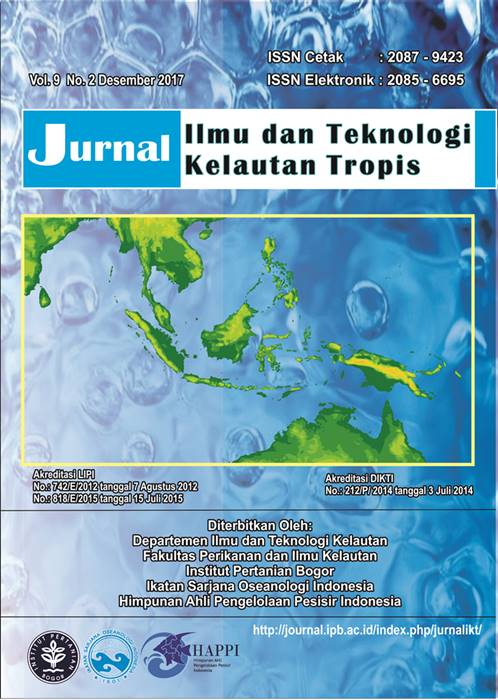THE EFFECTS OF DIFFERENT CHILLING METHOD AND STORAGE TIME ON THE ORGANOLEPTIC QUALITY OF FRESH SKIPJACK TUNA
Abstract
Fish freshness plays an importantant role in determining quality of fish product. Organoleptic is one of sensorik method for determining fish freshness. The fish deterioration mainly affected by temperature. This study aimed to determine the best method for determining organoleptic quality of skipjact tuna based on chilling methods and storage time. Fish sampling were taken from the Seram Sea, Maluku Province. Chilling methods was done by the different ratio between the ice and fish: first was without using ice, second was ratio 1:1 and the third was ratio 1:2. The time storage were 0, 2, 4, and 6 hours.The results showed that chilling methods ratio between the ice and fish of 1:1 with 6 hours storage time provided the best organoleptic quality with eye 8.87, mucus 8.83, gill 8.67, meat 8.73, odour 8.80, and texture 8.86.
Keywords: chilling methods, organoleptics, skipjact tuna
Authors
The author submitting the manuscript must understand and agree that the copyright of the article manuscript must be submitted/transferred to the Jurnal Ilmu dan Teknologi Kelautan Tropis. This work is licensed under the Creative Commons Attribution-ShareAlike 4.0 (CC BY-SA) International License in which the Author and Reader can copy and redistribute the material in any media or format, and remix, modify and build material for any purpose, but they must provide appropriate credit (citing articles or content), provide a link to the license, and indicate whether there is a change. If you mix, change, or create material, you must distribute your contribution under the same license as the original.


